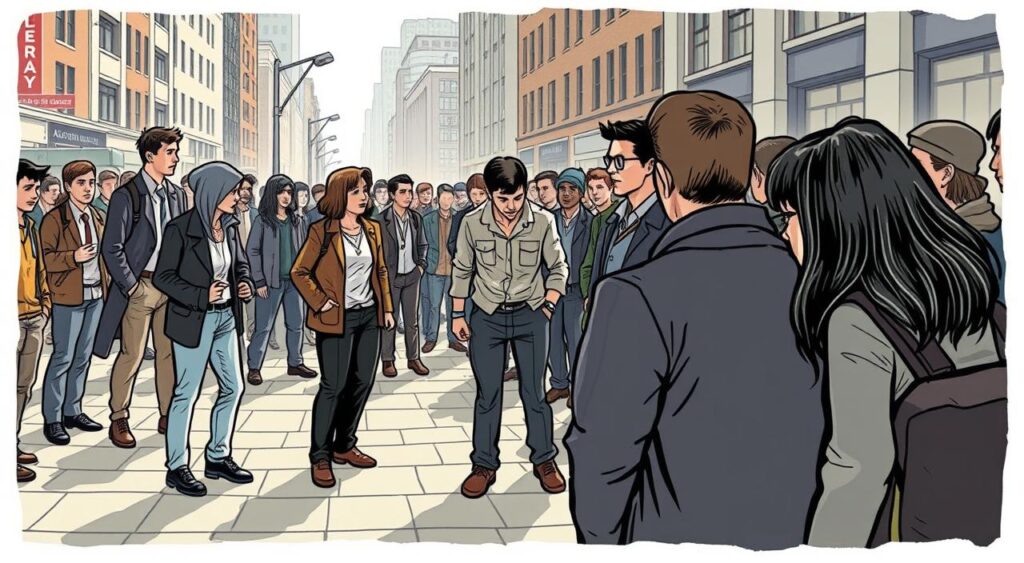Have you ever walked past someone in need, assuming another person would step in? You’re not alone. This common experience lies at the heart of the bystander effect mental model—a pattern that explains why individuals often hesitate to act during emergencies when others are nearby. This phenomenon, known as diffusion of responsibility, illustrates how the presence of multiple bystanders can lead to inaction in a crisis situation.
Let’s break it down. Imagine a crowded street where someone suddenly collapses. Surprisingly, the more witnesses there are, the less likely anyone is to offer help. Why? In group settings, people may feel less personal responsibility, thinking, “Surely someone else will handle this.” This is often referred to as pluralistic ignorance, where bystanders assume that others will intervene, leading to a lack of action.
This phenomenon gained attention after the tragic 1964 Kitty Genovese case, where multiple neighbors reportedly failed to intervene during a violent attack. While details of that story have been debated, it sparked decades of research into human behavior during crises, highlighting factors such as empathy, distress, and the psychology of bystanders.
Key Takeaways
- The bystander effect mental model occurs when people delay helping others in group settings
- Larger crowds often lead to decreased personal responsibility, highlighting the impact of pluralistic ignorance
- Clear understanding of emergencies improves response rates, especially in situations requiring immediate intervention
- Social cues strongly influence individual behavior, affecting their willingness to act in distressing situations
- Simple strategies can empower individuals to take action, fostering altruism and empathy in critical moments
The Bystander Effect Mental Model
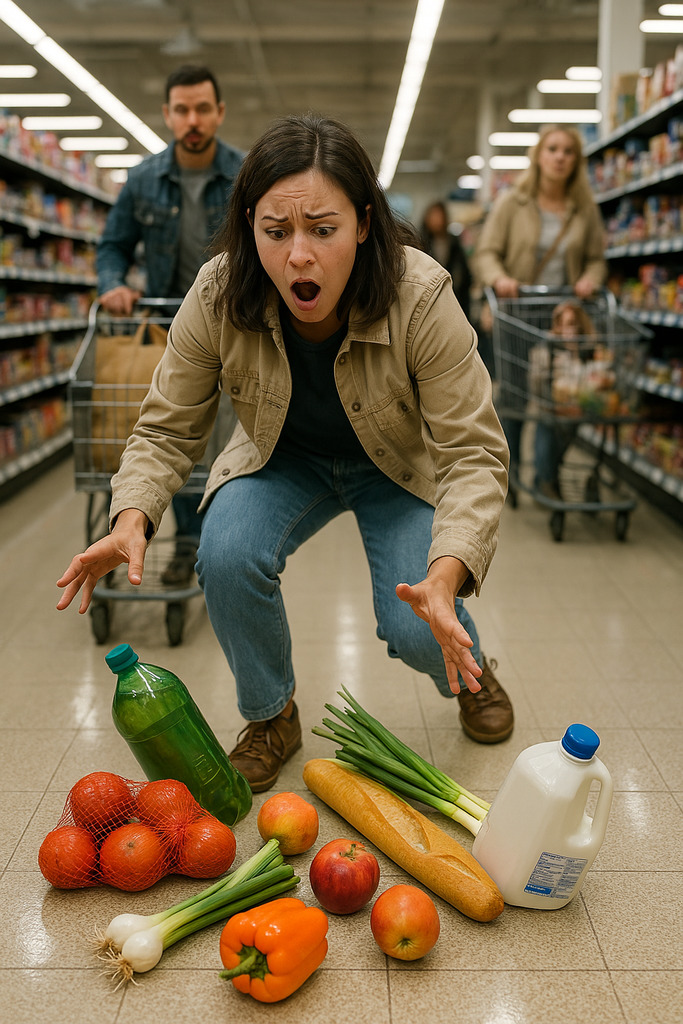
Picture this: someone drops their groceries in a busy store. Dozens of shoppers glance over, but no one moves to help. Sound familiar? This everyday scenario reveals how group settings can unexpectedly shape our choices. In moments like these, the bystander effect comes into play, where individuals in a crowd often assume that someone else will take action, leading to a diffusion of responsibility.
This can lead to a paralysis of sorts, where everyone feels compelled to wait for another person to step forward. It’s a stark reminder of how social dynamics can influence our instinct to assist a victim in distress, even when we know we should intervene.
Understanding the psychology behind this behavior is crucial, as it highlights the importance of empathy and altruism in emergency situations. This example of the bystander effect reflects broader trends in social psychology, urging us to reconsider our perspective as bystanders in critical moments.
Understanding Our Group Behavior
Studies in social psychology show people often hesitate to act when surrounded by others. Researchers found that 85% of individuals in crowded spaces wait for someone else to respond first. It’s like an invisible force that whispers: “They’ll handle it.”
Think about the last time you saw spilled coffee at work. Did you clean it up immediately, or assume a coworker would? This split-second decision shows how shared spaces can trick our brains into waiting for others to take charge.
Why This Matters Now
Recognizing these patterns helps us create kinder communities. Schools use this knowledge to teach students how to speak up against bullying. Offices train teams to share responsibilities clearly. Even neighborhood watch programs apply these insights to keep streets safer.
Next time you’re in a group situation, ask yourself: “What if everyone’s waiting for someone else to act?” That simple shift in perspective could be the nudge needed to make a difference.
Historical Background and Key Examples
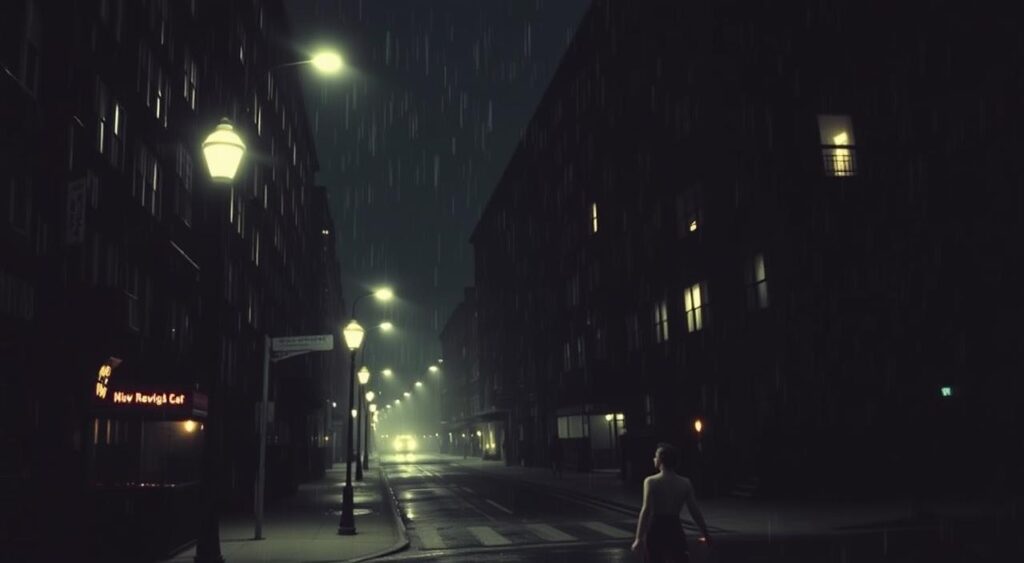
In 1964, a chilling event in New York City changed how we view group behavior. A young woman named Kitty Genovese was attacked near her apartment, and initial reports claimed 38 witnesses did nothing. While later investigations revealed some helped, this tragedy became a landmark example for studying human responses to crises.
The Kitty Genovese Case
Newspaper headlines shocked readers with claims of widespread inaction. A New York Times article described the number of bystanders watching through windows as the attack unfolded. Though details were later questioned, the story sparked urgent questions about bystander intervention: How could so many people not act in this situation? What stops us from helping others in clear danger?
Evolution of Social Psychological Research
Scientists Bibb Latané and John Darley launched groundbreaking studies after this event. Their experiments recreated emergencies in controlled settings. In one test, participants alone in a smoke-filled room reported the danger 75% faster than those in groups.
These findings revealed two critical patterns. First, diffusion of responsibility makes individuals feel less obligated to act in crowds. Second, people often look to others for cues on how to respond. Modern safety programs now teach specific actions like pointing to someone and saying: “You in the red shirt—call 911!”
Today, schools and workplaces use this research to combat hesitation during critical moments. By understanding our historical blind spots, we can design better systems for collective care.
Psychological Processes Underlying Bystander Behavior
Ever noticed how people glance around before deciding to help? Three hidden forces shape these moments of hesitation. Let’s explore how our minds navigate group dynamics during emergencies.
Shared Blame in Crowds
Imagine finding a wallet on a busy sidewalk. You might think, “Someone else will handle this.” This is diffusion of responsibility—the belief that others will act, so you don’t need to. Recent studies show people in groups take 30% longer to report emergencies than those alone.
Fear of Looking Foolish
Picture spilled coffee in an office breakroom. Many walk past, worried others might judge their cleanup attempt. This evaluation apprehension stops action because we fear social embarrassment. Researchers found 60% of participants hesitated to help strangers when watched by peers.
Following the Silent Majority
During a sudden power outage, have you stayed calm because others did? That’s pluralistic ignorance—assuming nothing’s wrong if no one reacts. In smoke-filled room experiments, groups often ignored danger signals when others stayed passive.
| Process | What Happens | Real-Life Example |
|---|---|---|
| Shared Responsibility | Assuming others will act | Ignoring car alarms on busy streets |
| Social Anxiety | Fear of embarrassment | Not offering CPR during public emergencies |
| Group Misreading | Copying others’ inaction | Walking past fallen signage in airports |
These patterns often work together. A person might first check others’ reactions (pluralistic ignorance), then worry about judgment (evaluation apprehension), and finally decide someone else will help (diffusion). Understanding this chain helps us break it.
Inside the Bystander Effect Mental Model

Imagine standing in a packed elevator when someone suddenly feels unwell. Most people freeze, glancing sideways to see if others will react. This common hesitation reveals how group dynamics shape our choices—a pattern psychologists call the bystander effect mental model.
Breaking Down the Pattern
At its core, this framework explains why individuals sometimes fail to act in group emergencies. Two key ingredients drive the behavior. First, shared responsibility makes each person think someone else will step up. Second, people often misinterpret others’ calmness as a sign that help isn’t needed.
Consider a spilled drink at a family reunion. Relatives might assume Aunt Carol will grab paper towels, while she waits for Uncle Joe. This cycle of assumptions delays action. Research shows that knowing about this pattern can cut response times by half in practice drills.
Personal traits also matter. Some folks naturally take charge, while others hang back. A teacher might rush to assist a choking student, whereas a shy classmate hesitates. Training programs now teach specific phrases like “I’ll call 911—you find the first aid kit” to override uncertainty.
By recognizing these invisible forces, we can design better safety plans. Schools use role-playing to prepare students. Offices assign clear emergency roles. Even families create “action plans” for crises. When everyone understands their part, collective responsibility becomes personal power.
The Decision Model of Helping Explained
Why do people freeze when someone needs help? Psychologists Latané and Darley cracked this puzzle with their five-step model. Their research shows how everyday decisions determine whether we act or stay silent.
The Five-Step Process by Latané and Darley
Imagine seeing a car swerve off the road. Your brain goes through these steps:
1. Notice the event: Did you see it happen? Distractions like phone calls or headphones often block this first step. Studies found people miss 40% of emergencies when preoccupied.
2. Define it as urgent: Is this a real crisis? If others stay calm, you might think, “Maybe it’s nothing.” Fire drills train us to recognize alarms for this reason.
3. Take responsibility: “Should I step in?” This is where diffusion of responsibility kicks in. Groups of five people are 60% less likely to act than pairs, according to lab tests.
4. Know how to help: First aid training matters here. People with CPR skills respond three times faster during cardiac emergencies.
5. Decide to act: Fear of legal trouble or embarrassment can stop even prepared individuals. Simple prompts like “Call 911 now” reduce hesitation by 75%.
Miss any step? No help comes. That’s why safety experts teach specific actions like pointing to someone and saying, “You—get the defibrillator.” Breaking the chain early saves precious time and lives.
Neuroimaging and Dispositional Factors in Bystander Intervention
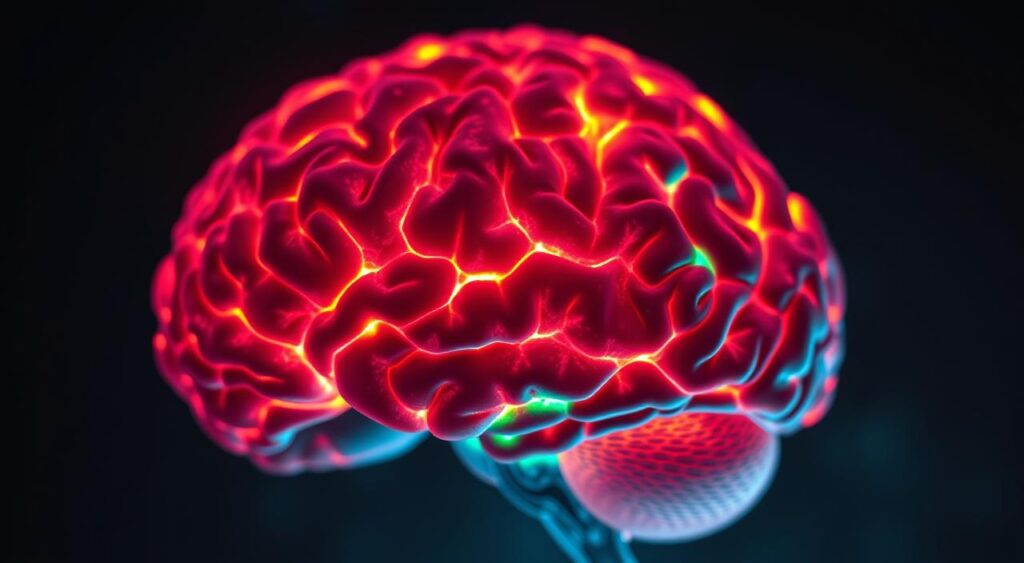
Have you ever wondered why some people jump into action while others freeze during emergencies? Cutting-edge brain scans reveal surprising answers. Scientists now see how our biology and personality traits team up to shape helping behavior.
Key Brain Regions and Neural Mechanisms
When we witness distress, specific brain areas light up like alarm systems. The medial prefrontal cortex (MPFC) helps us decide whether to help in a bystander intervention situation. But here’s the twist: brain scans show this region becomes less active when a greater number of bystanders are present. It’s like hitting snooze on your “take charge” button, illustrating the concept of diffusion responsibility.
Other areas spring into action too. The amygdala processes fear signals, while the insula helps us feel others’ pain. During a subway emergency, these regions might push someone to call for help—if their brain doesn’t get drowned out by crowd noise, illustrating the way diffusion responsibility affects bystander behavior in social psychology.
Influence of Personality and Empathy
Not everyone reacts the same way. People with high empathy often override the bystander effect mental model, demonstrating a strong sense of diffusion responsibility. They’re like emotional firefighters—their brains respond faster to others’ needs in a situation where intervention is necessary. Studies show empathic individuals have 30% stronger neural responses in compassion-related areas.
Personality plays a role too. Those who score high in responsibility traits are twice as likely to intervene compared to other bystanders. Imagine two coworkers spotting spilled coffee: one might clean it immediately, while another waits for maintenance. Their brain wiring tells different stories about how each person responds to the number of bystanders present.
| Brain Area | Role in Helping | Real-World Impact |
|---|---|---|
| MPFC | Decision-making | Less active in crowds |
| Amygdala | Fear processing | Triggers fight-or-flight |
| Insula | Empathy center | Makes others’ pain feel real |
Training can reshape these patterns. CPR classes don’t just teach skills—they build neural pathways for quick action. Next time you hesitate, remember: your brain and heart can work together to make a difference.
Real-World Implications and Case Studies
What happens when a stranger collapses in a crowded subway? Scientists have recreated similar scenarios to understand why people sometimes freeze instead of acting. Through carefully designed tests, they’ve uncovered surprising truths about human behavior in group settings.
Experiments Demonstrating the Effect
In one landmark study, participants sat in rooms filling with smoke. When alone, 3 out of 4 people reported the danger quickly. But in groups? Only 1 in 10 bystanders spoke up. The presence of others made them second-guess the urgency—like assuming someone else would handle a flickering office exit sign, illustrating the diffusion of responsibility in this situation.
Another experiment simulated medical emergencies. People who thought they were alone helped 85% of the time. When believing four other bystanders were listening? That number dropped to 31%. It’s like hesitating to pick up fallen oranges in a busy grocery aisle, thinking “Maybe staff will get it.” This highlights the factors influencing individual intervention in critical situations.
| Experiment | Setup | Result |
|---|---|---|
| Smoke Room Test | Controlled smoke leakage | Group response rate: 10% |
| Seizure Simulation | Audio emergency scenario | Help provided 60% less often in groups |
| Street Accident | Actors faking injuries | 1 helper per 15 witnesses on average |
Simple changes dramatically shift outcomes. When researchers told subjects “You’re responsible,” help rates tripled. This mirrors how clearly labeled emergency buttons get used faster than ambiguous alarms. Training programs now use these insights—like teaching workers to shout “Call 911 now!” instead of “Somebody help!”
This approach addresses the diffusion of responsibility among bystanders, encouraging individual intervention in critical situations where a victim may need assistance.
Research on group behavior shows even small nudges matter. In one field test, placing a single volunteer helper in crowds increased overall assistance by 40%. It’s proof that understanding these patterns helps create environments where people feel empowered to act.
Overcoming Diffusion of Responsibility and Inaction
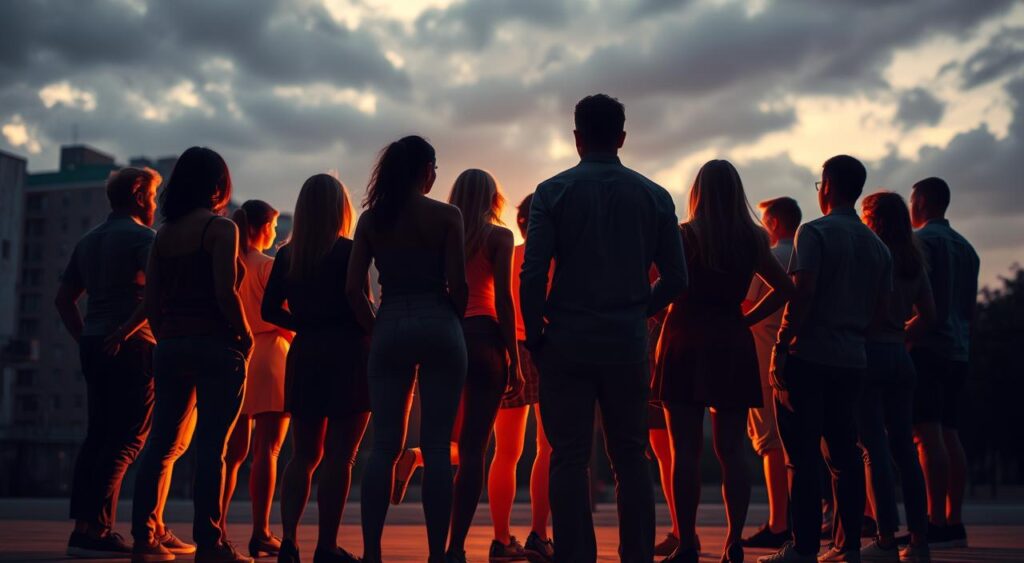
What if you could turn group hesitation into collective action? When multiple bystanders witness a situation, we often assume others will handle it—like ignoring a spilled drink at a party. This diffusion of responsibility makes everyone wait for someone else to step up. But simple changes can flip this script in favor of effective bystander intervention.
Spark Action With Visible Accountability
Studies show people act faster when they feel watched. Security cameras in stores increase cleanup efforts by 40%. How does this work? Knowing others might review your choices triggers a sense of personal duty. Try these real-world fixes:
| Strategy | How It Works | Real-World Use |
|---|---|---|
| Public Recognition | Display helper names on boards | Schools post “Good Citizen” awards |
| Direct Requests | Name specific people to assist | “Alex, grab the fire extinguisher!” |
| Role Assignment | Pre-assign emergency tasks | Workplace safety teams |
Larger groups need clearer prompts. If five people see a car accident, each feels 80% less responsible than if alone. Break this cycle by pointing to someone: “You in the blue hat—call 911!” This cuts through the “someone else” myth.
Ever notice how stores post employee photos? That visible accountability makes workers 30% more likely to assist customers. Apply this at home: label cleaning charts with names. When roles are clear, action follows.
Encouraging Positive Intervention Strategies
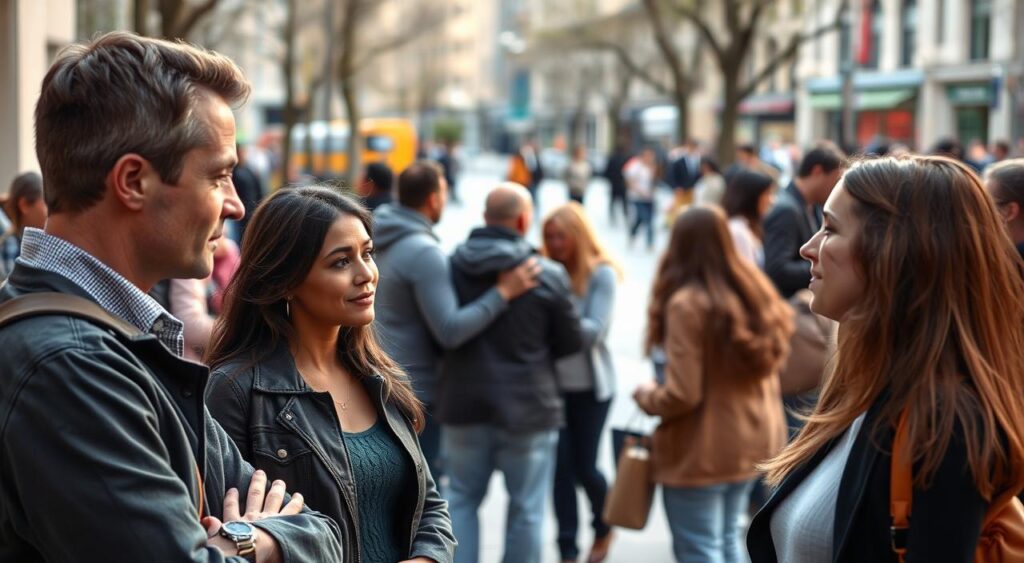
What makes a community resilient in tough moments? Often, it’s the quiet heroes who step forward when others hesitate in a bystander intervention. Small actions create ripples that transform entire neighborhoods, demonstrating the diffusion of responsibility among individuals.
These factors contribute to altruism, encouraging bystanders to assist a victim in distress, rather than waiting for someone else to act. This article highlights the importance of understanding the social psychology behind the number of bystanders present in a situation, echoing the lessons learned from the case of Kitty Genovese.
Community-Based Approaches
Neighborhood safety groups show how teamwork beats hesitation. Cities like Portland saw a 25% drop in street harassment after launching community safety programs. These initiatives teach simple skills:
- Organizing walking buddies for night commutes
- Hosting first-aid workshops at libraries
- Creating “safe spot” stickers for local businesses
Schools now use role-playing games to build confidence. Students practice scenarios like helping lost tourists or reporting suspicious activity. One Ohio district saw 40% more students speak up after six months of training.
Practical Tips for The Bystander Effect Mental Model
Next time you witness a problem, try this three-step plan:
1. Break the freeze: Take a deep breath and scan the situation. Ask yourself: “What’s the safest way to assist the victim?”
2. Delegate clearly: Point to someone specific: “You with the blue hat—call 911 while I stay here.” Direct requests get 70% faster responses, especially in distress situations.
3. Prepare together: Families practice emergency drills like fire escapes. Couples discuss how to handle street harassment. Being ready reduces panic and helps combat the diffusion of responsibility.
Kindness spreads faster than fear. When one person acts, others often follow. That’s the power of collective altruism—a force that turns bystanders into allies.
Conclusion
Everyday moments test our willingness to act—a dropped wallet in a store, a stranger tripping on stairs. This phenomenon, called the bystander effect mental model, shows how group dynamics can pause our instincts to help.
Historical examples like the Kitty Genovese case from the 1960s and smoke-filled room experiments teach us valuable lessons about human behavior and the diffusion of responsibility in emergency situations.
Three key takeaways emerge. First, hesitation often comes from misreading situations, not cold hearts. Second, clear directions (“You—call 911!”) work better than vague cries for help in distress. Third, preparation builds confidence—people with first-aid training act three times faster during crises, illustrating the importance of bystander intervention.
Your choice matters more than you think. What if your decision to assist inspires others nearby? Studies prove that one prepared bystander can boost group response rates by 40%. Small actions create ripples—picking up spilled items, checking on someone who’s unwell, or speaking up when others stay silent in situations where a victim may need help.
Next time you witness a need, remember: change starts when someone decides to be that someone. How will you use this knowledge to shape your next move?
